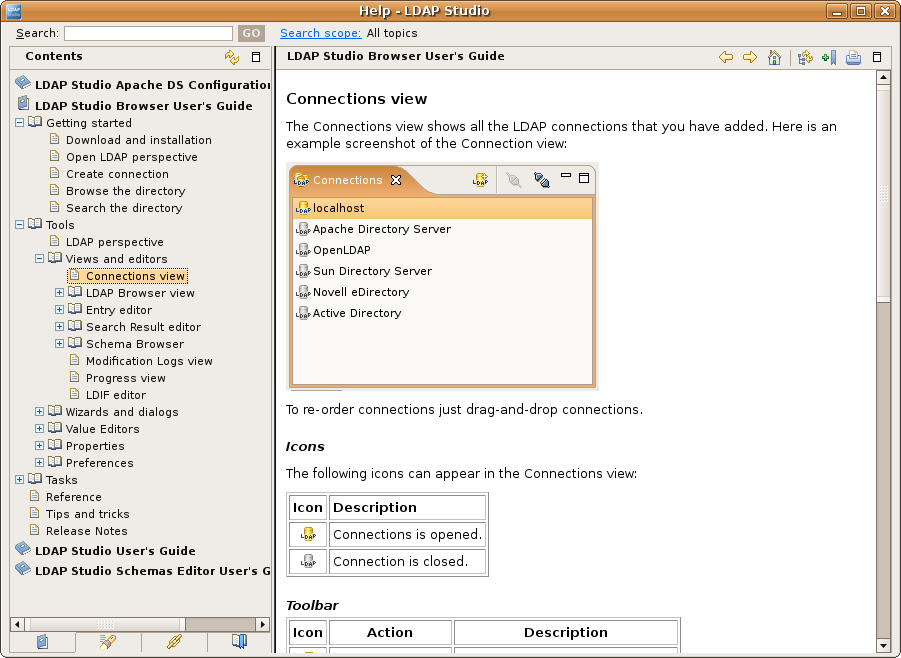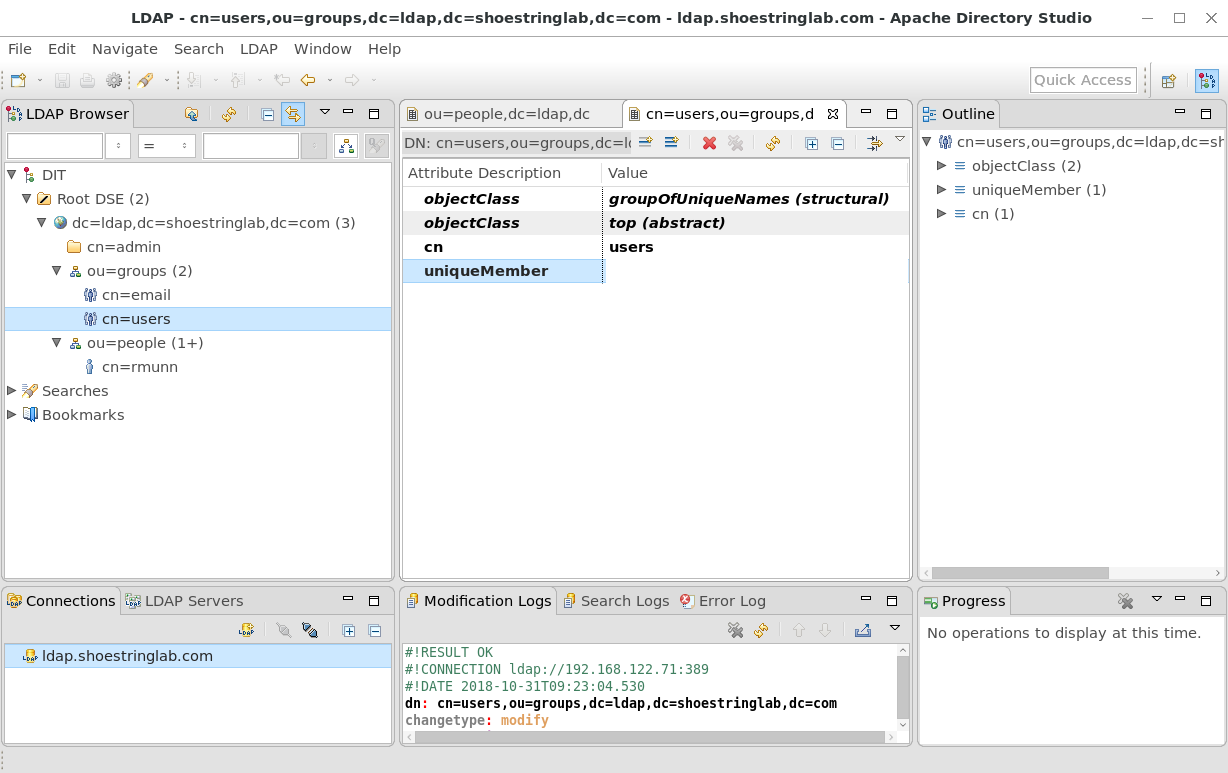


UniqueMember: cn=John Milton,ou=users,o=mojo This format is actually a human-readable file. When the data is exported, it's saved in LDIF format. If you need to backup your data or replicate the information in your LDAP, you can export the data. Here are the Distinguished Name for each user. Now we need to fill-in the values for these attributes. Repeat the same steps for adding an attribute.ġ2. We need to add one more uniqueMembers (for a total of two uniqueMembers). On the Attribute type field, enter uniqueMember.ġ1. This means we need to add one more uniqueMember attributes for a total of two uniqueMember attributes.Ĩ. One uniqueMember attribute will represent one user. We'll be placing the Distinguished Name (dn) of our users in this entry. The DN Preview should read cn=Admin,ou=groups,o=mojoħ. The Parent field should read ou=groups,o=mojo. Now you need to enter a Distinguished Name (dn). We'll use the groupOfUniqueNames object to represent each role.ģ. Now, we will be adding the authorization level for each of these persons. We have added the personal information, as well as the usernames and passwords, for each person under the ou=users. Here are the details of the three remaining users. In order to do that, just repeat the same steps earlier.

Now we need to add the remaining three users. The Entry Creation Method window will appear.Ĥ.
#APACHE DIRECTORY STUDIO FOR MAC PASSWORD#
Source: inetOrgPerson can contain a user id (uid) and password (userPassword) which will be useful later for authenticating users from using LDAP.ġ. To accommodate information requirements found in typical Internet and The inetOrgPerson object class is a general purpose object class that We'll represent each person using the inetOrgPerson object. We'll place their personal information under the ou=users whereas we'll place their authorization levels under the ou=groups. When we're done with this tutorial, we should have the following structure: For the topmost parent, we'll retain mojo. We'll make the names a little bit formal, and make it conform with the naming convention of LDAP. What we'll do is divide the roles into elements. Remember we have the regular users and the admins. Under the roles we have two sub-divisions. We'll put all the identities of each person in a separate element, while the roles will be placed on another element. For this tutorial we'll organize them based on identity and roles. We can organize them by gender, by job function, and etc. There are many ways to organize our members. Under the mojo we will assign our members. We'll pick the name mojo as the topmost parent. Logically, the name of the company fits that requirement. We need to assign the topmost parent of our structure. LDAP is a hierarchical tree structure, so our design will be influenced by that. Let's define the important elements of the company. LDAP is a good protocol to meet all these requirements. These information and structure will be shared among different applications of the company. Each has their own information and structure. We may have hundreds of people from different departments in five years time. Our task is to create a hierarchical structure of our organization using LDAP because we anticipate the eventual growth of the company. We have four people, and two of them are admins. We have a small startup company named Mojo Enterprises. I suggest my readers to visit the following article Should I Use a Directory, a Database, or Both? Source: this is your first time to LDAP, you might be wondering how is this different from an RDBMS. Deeper inside the directory might appear entries for people, departments, teams, printers, and documents. LDAP directories often use Domain Name System (DNS) names for the highest levels. A directory information tree often follows political, geographic, or organizational boundaries. For example, the telephone directory is an alphabetical list of persons and organizations, with each record having an address and phone number. A directory is an organized set of records. The Lightweight Directory Access Protocol (LDAP) is an application protocol for reading and editing directories over an IP network. These plugins can even run within Eclipse itself. It is an Eclipse RCP application, composed of several Eclipse (OSGi) plugins, that can be easily upgraded with additional ones. The Eclipse based LDAP browser and directory clientĪpache Directory Studio is a complete directory tooling platform intended to be used with any LDAP server however it is particularly designed for use with ApacheDS. This tutorial will be the basis for our other Spring LDAP integration tutorials. We will be using the excellent Apache Directory Studio IDE. In this tutorial we will setup a basic LDAP structure containing users and roles.


 0 kommentar(er)
0 kommentar(er)
